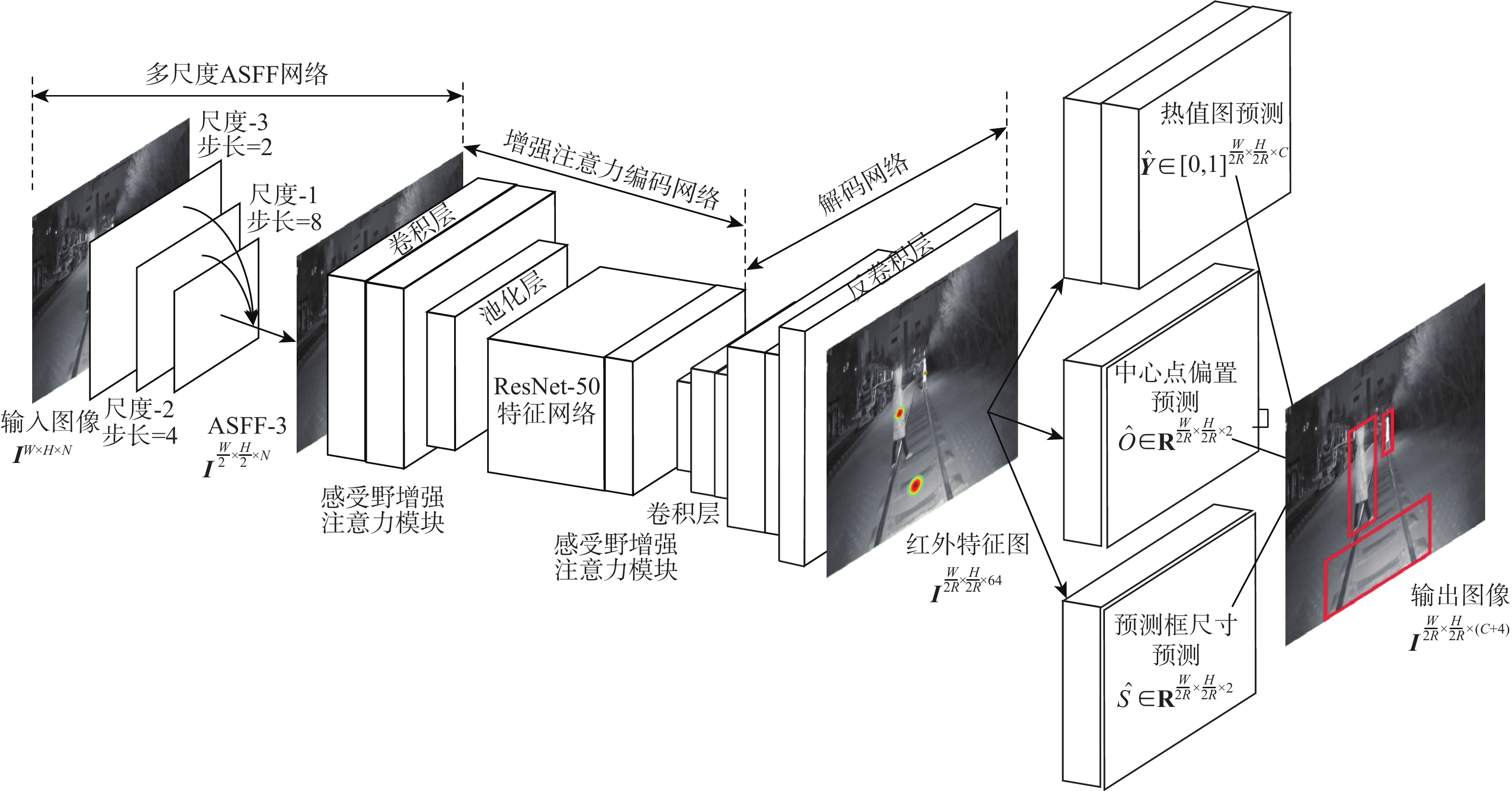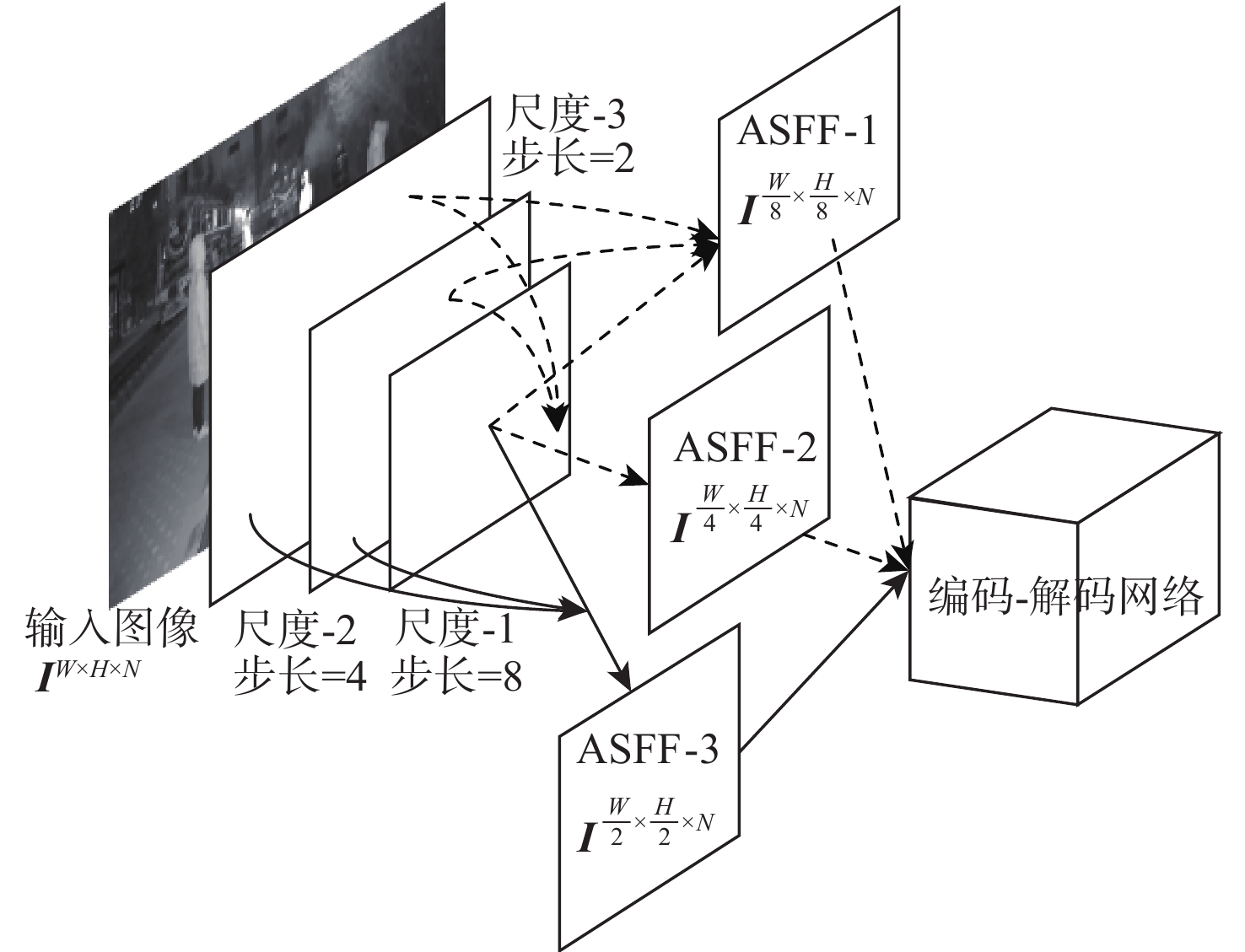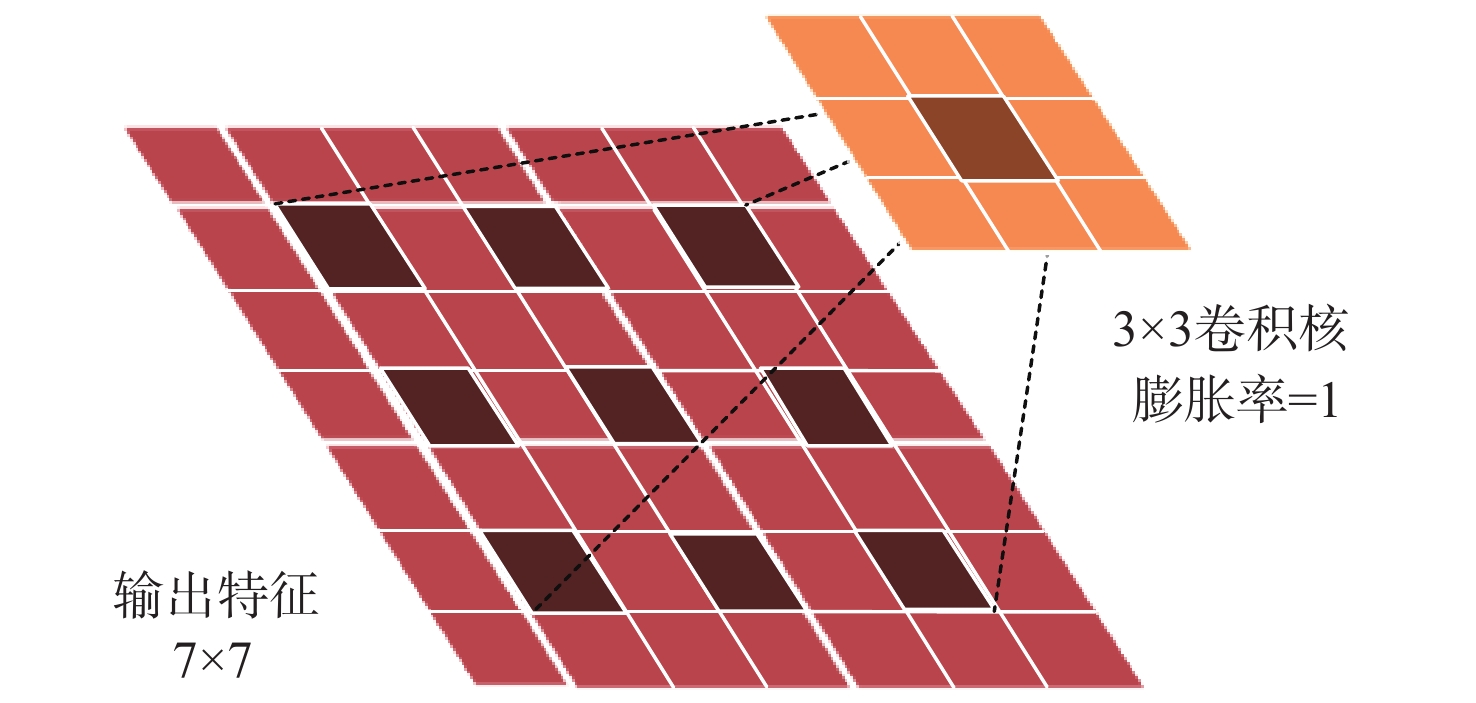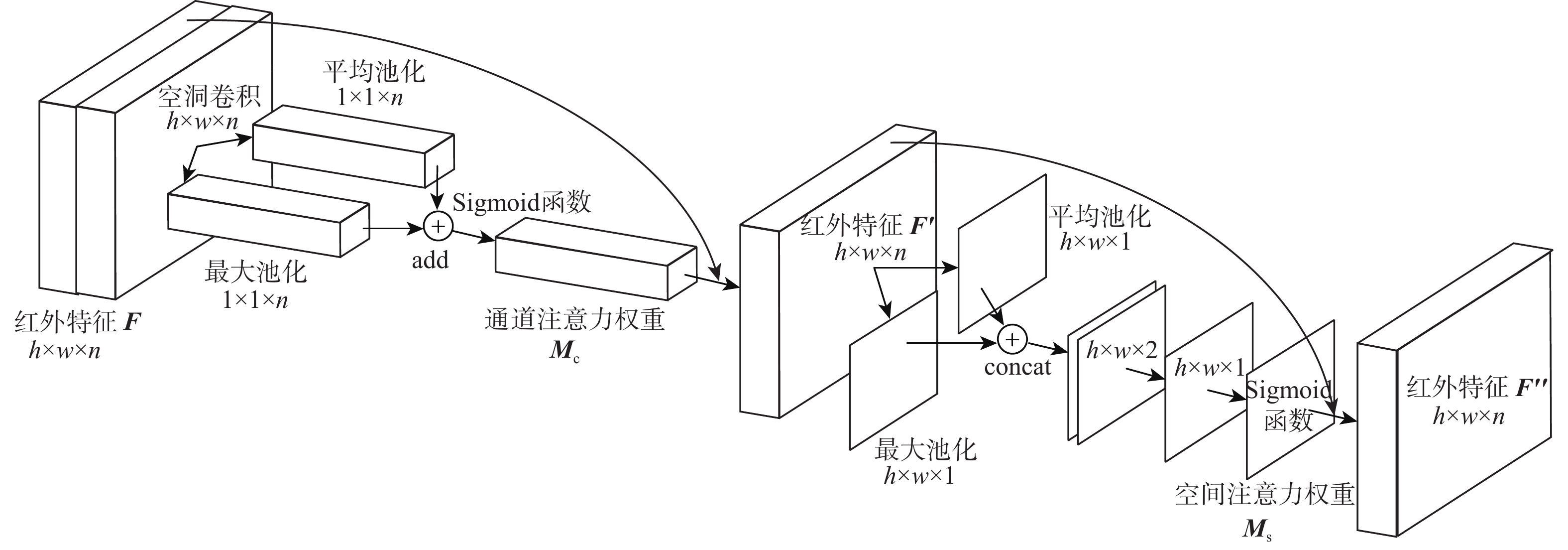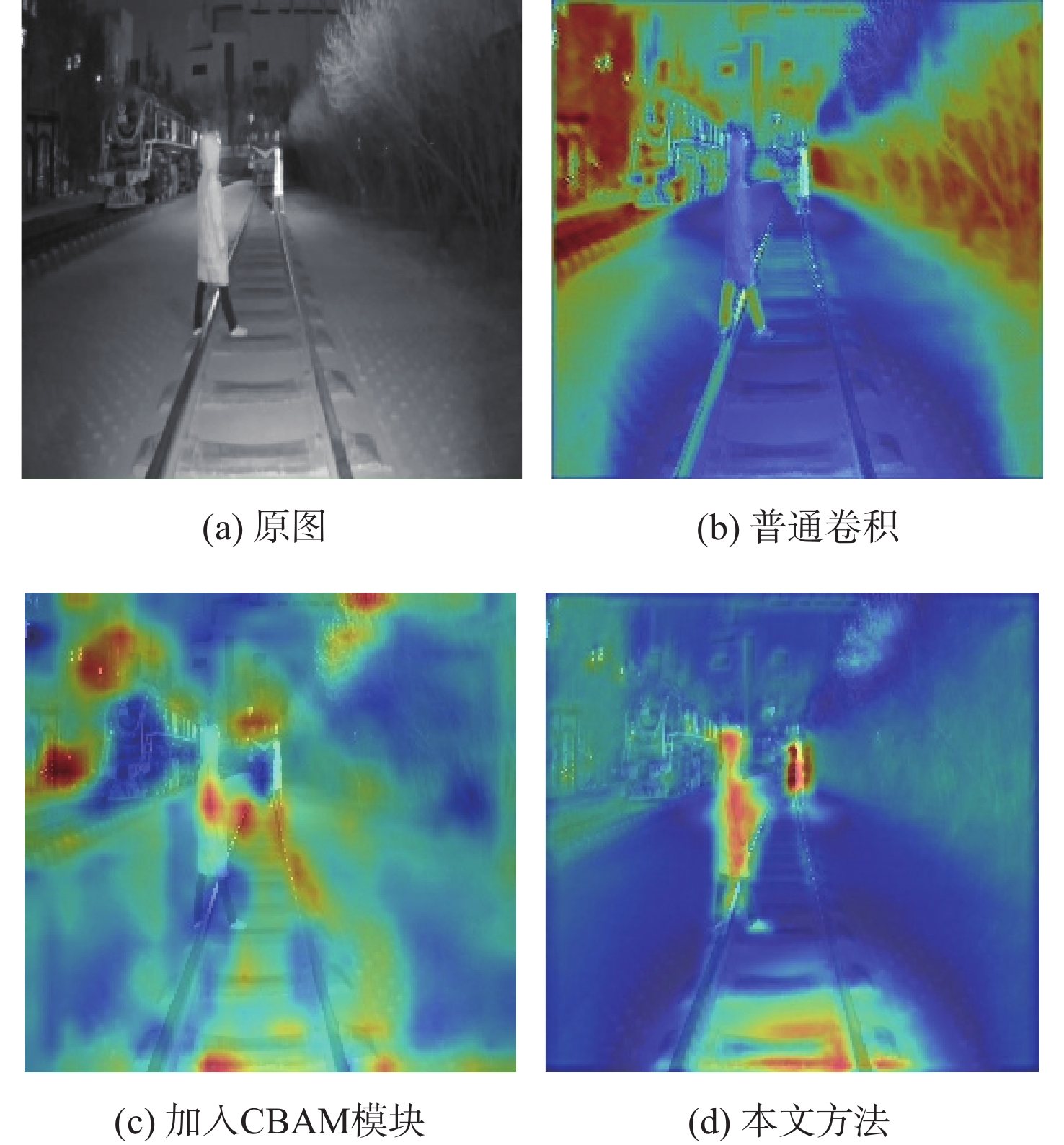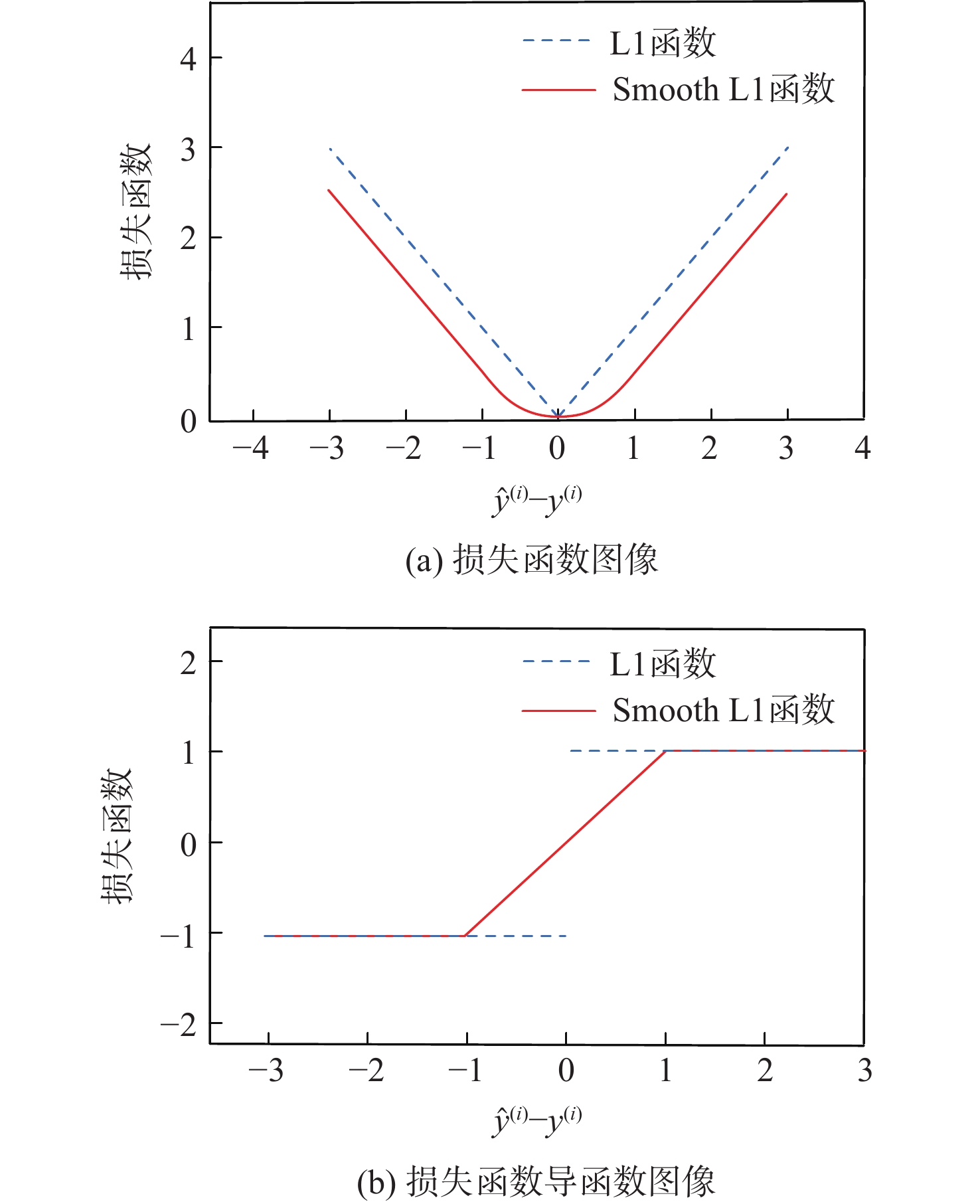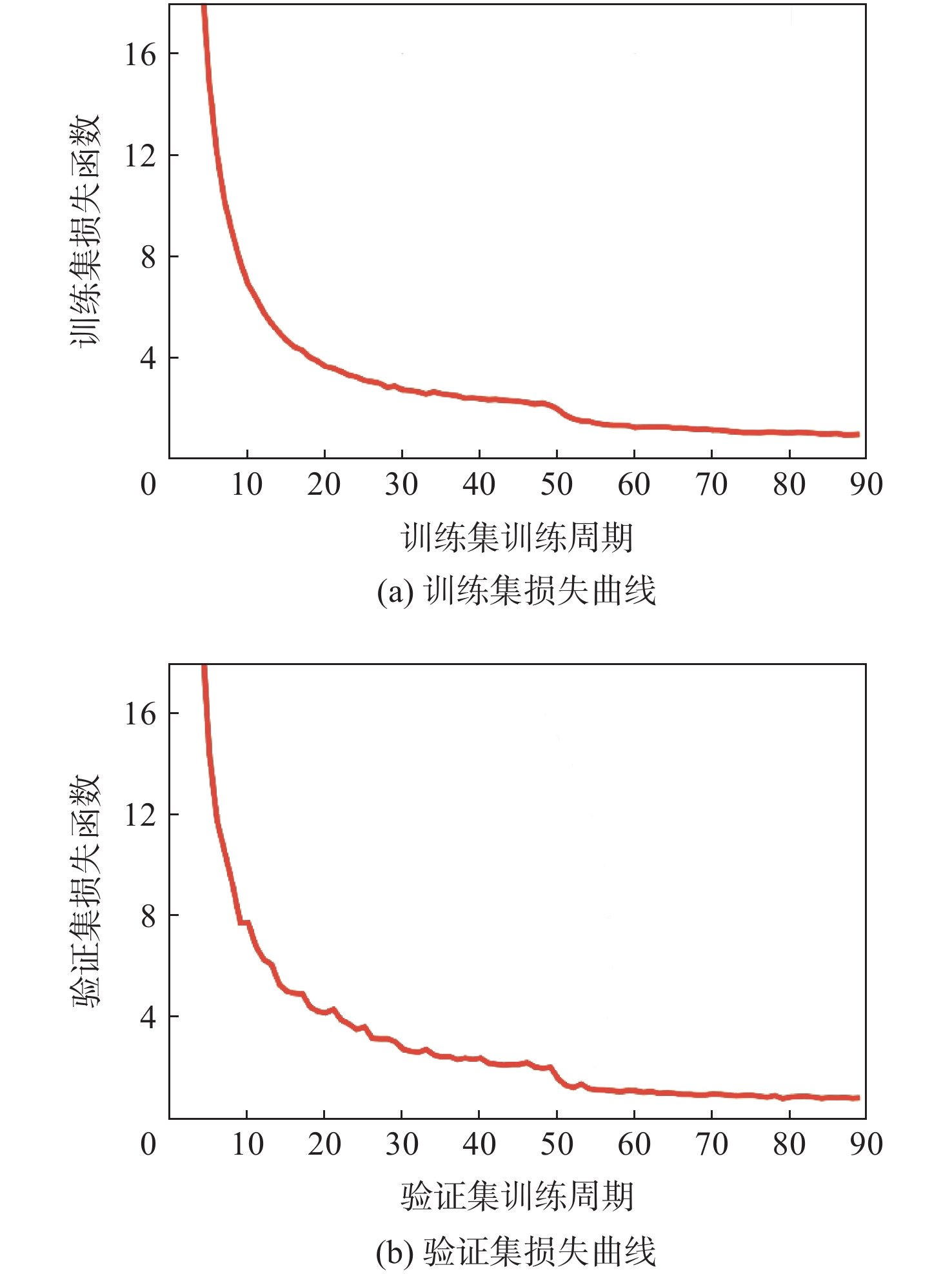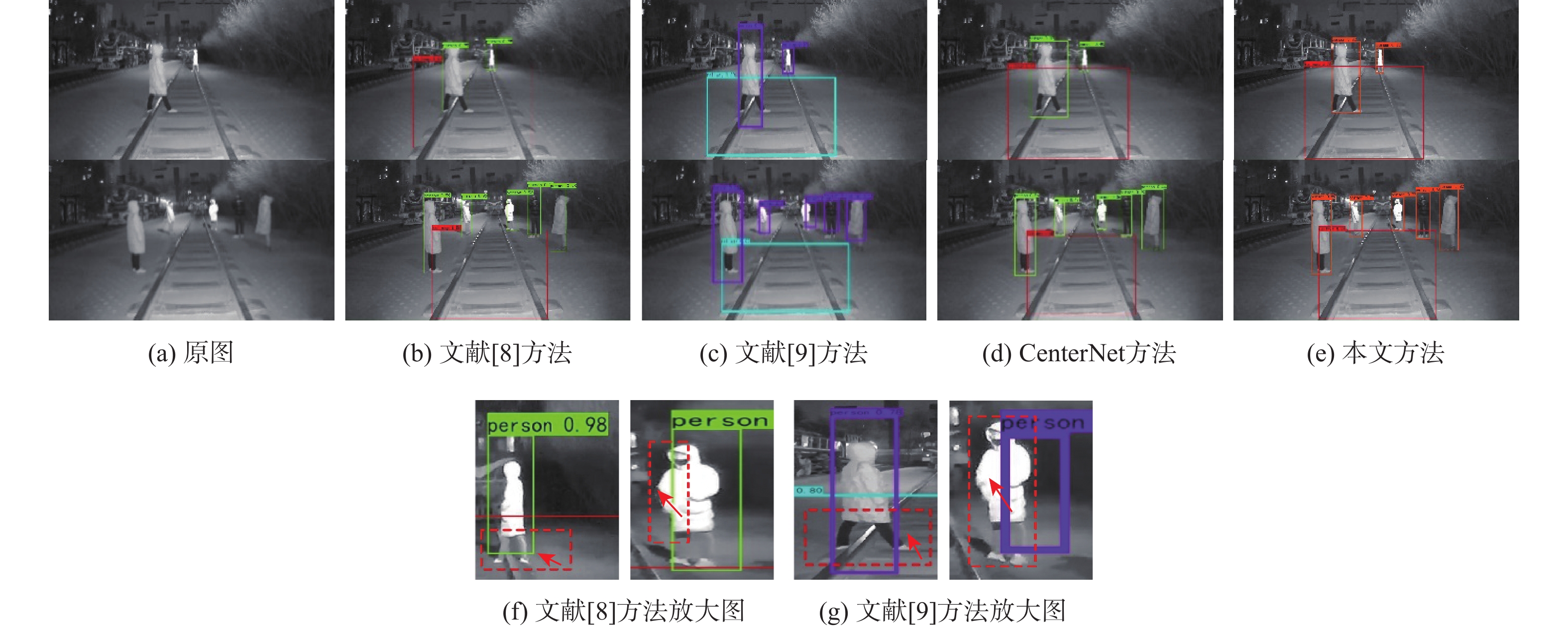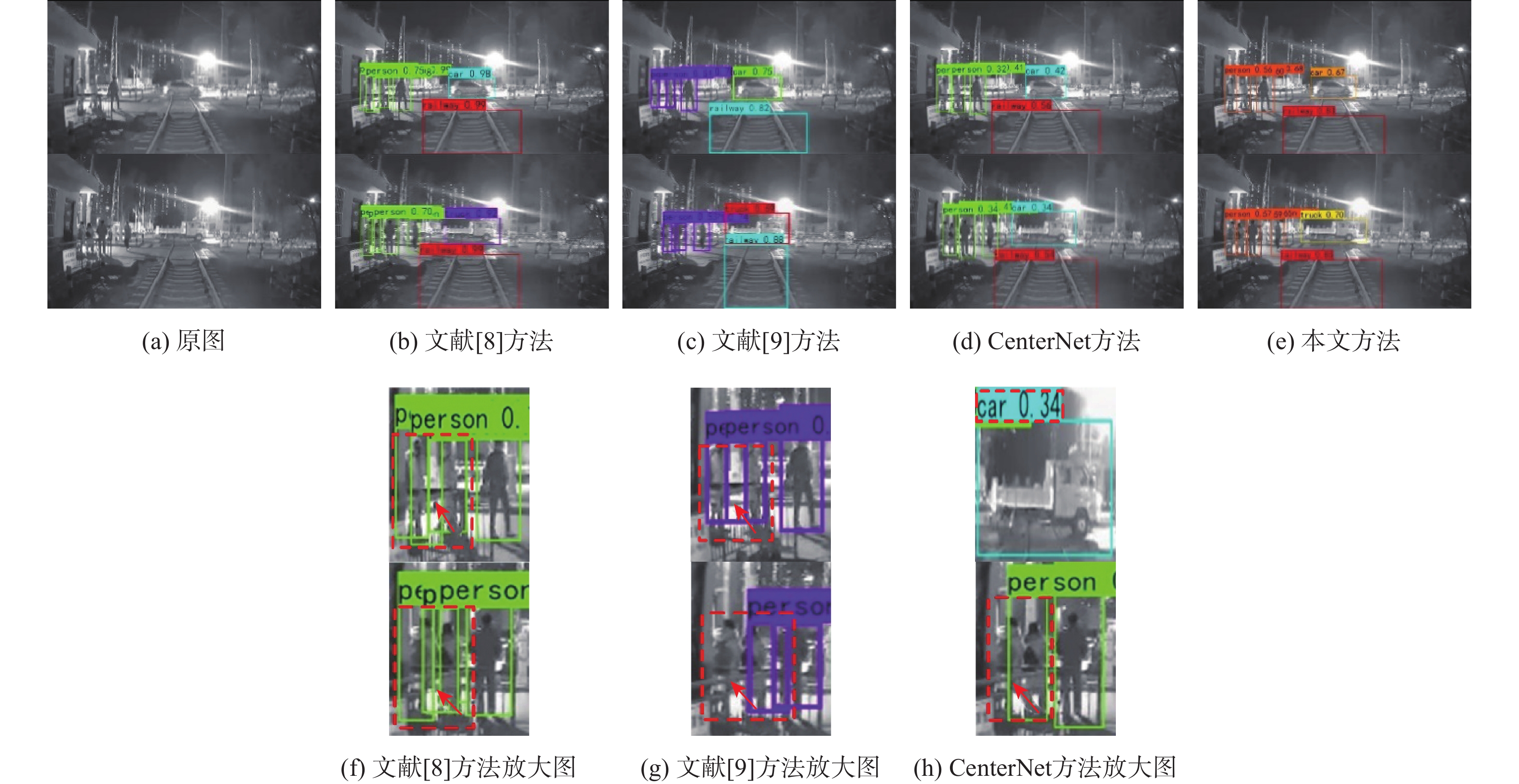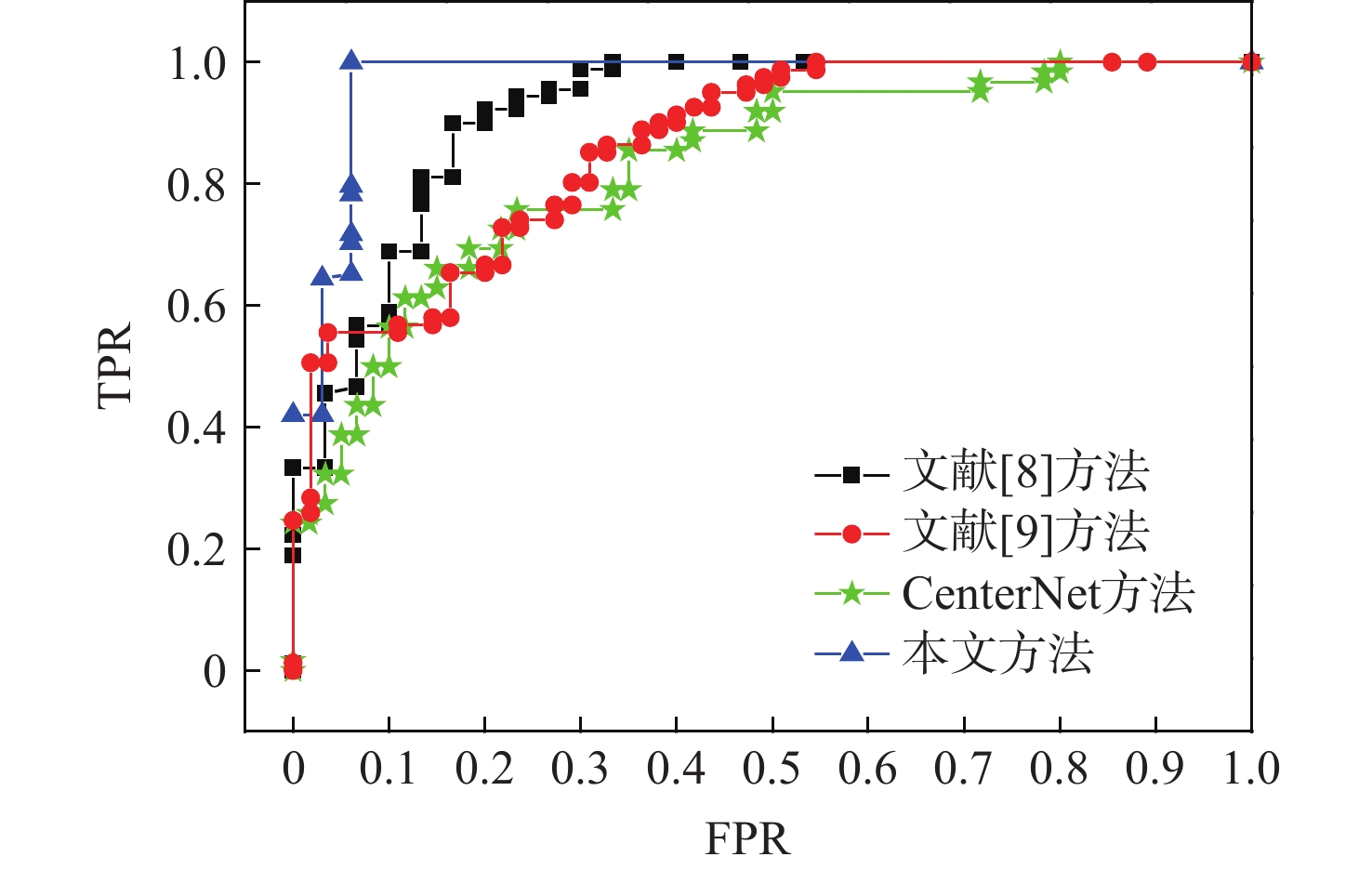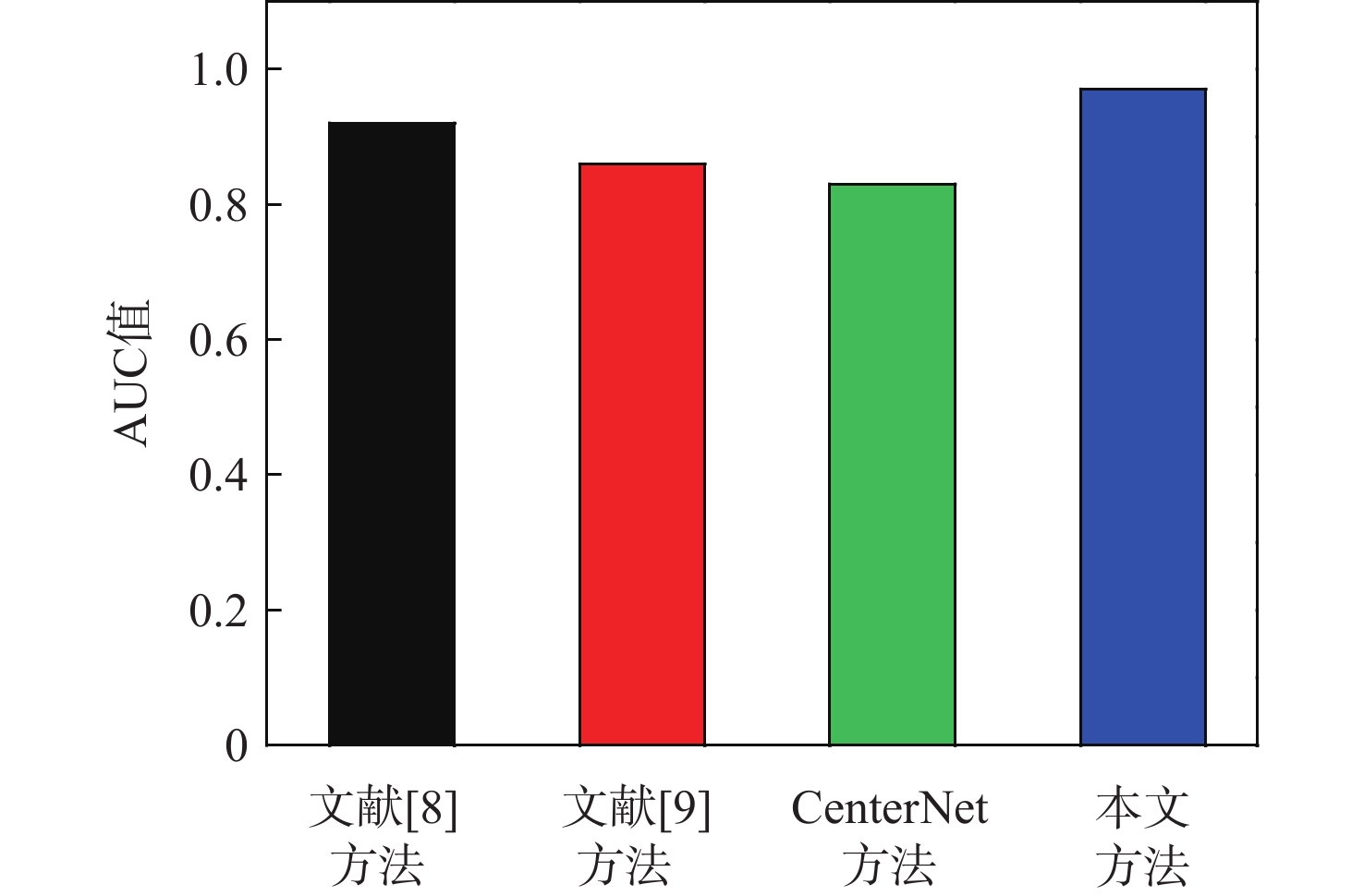Detection of railway object intrusion under infrared low light based on multi-feature and attention enhancement network
-
摘要:
针对红外弱光环境下铁路异物检测时存在目标特征提取不充分、检测精度及实时性低的问题,在CenterNet目标检测模型的基础上,提出了一种红外弱光下多特征融合与注意力增强的无锚框异物检测深度学习模型。在红外目标多尺度特征提取的基础上,引入自适应特征融合(ASFF)模块,充分利用目标高层语义与底层细粒度特征信息,提升红外目标特征提取能力。通过提出的空洞卷积增强注意力模块(Dilated-CBAM)进行关键特征提取,扩大注意力模块感受野范围,克服了原始CenterNet卷积块感受野映射区域变窄、无法检测弱小目标的问题,提升了无锚框网络的检测精度。使用Smooth L1损失函数进行训练,克服了L1损失函数在网络训练过程收敛速度慢及训练不稳定解的问题。通过铁路红外数据集及现场实验测试,结果表明:所提方法较原始CenterNet模型平均检测精度提高了8.03%,检测框置信度提升了31.23%,平均检测速率是Faster R-CNN模型的9.6倍,所提方法在红外弱光环境下能够更加快速准确地检测出铁路异物,主客观评价均优于对比方法。
Abstract:There are some problems in railway object intrusion detection in infrared weak light environment, such as insufficient target feature extraction, low detection accuracy and real-time performance. Aiming to those problems, an anchor-free object intrusion depth learning model based on CenterNet target detection model is proposed. This model work with multi-feature fusion and attention enhancement. Firstly, based on the multi-scale feature extraction of infrared targets, the adaptive spatial feature fusion (ASFF) module is used for feature extraction. And to improve the feature extraction ability of infrared targets, this model makes full use of target high-level semantics and low-level fine-grained feature information. Secondly, the key features are extracted through the proposed modified dilated-convolutional block attention module (Dilated-CBAM), which expands the receptive field range of the attention mechanism module. On the one hand, this improvement overcomes the problem that the mapping area of the convolution block receiving field of the original central network becomes narrow and cannot detect weak and small targets; on the other hand, this improvement improves the detection accuracy of the anchor free network. Then, Smooth L1 loss function is used for training, which overcomes the problems of slow convergence speed and unstable solution of L1 loss function in the network training process. Finally, the experimental results are obtained through railway infrared data set and field experiments. The experimental results show that compared with the original CenterNet model, the average detection accuracy of this method is improved by 8.03%, the confidence of the detection frame is improved by 31.23%, and the average detection rate is 9.6 times higher than that of the Faster R-CNN model. This method can detect railway object intrusion more quickly and accurately in the infrared weak light environment, both subjective and objective evaluation are better than the comparison method.
-
表 1 不同方法红外铁路侵限检测指标对比
Table 1. Comparison of infrared railway intrusion detection indicators of different methods
表 2 本文模型消融实验指标比较
Table 2. Comparison of ablation experimental indexes in the proposed method
基准 ASFF
模块Dilated-CBAM
模块Smooth L1
损失函数mAP/% √ 89.47 √ √ 92.38 √ √ √ 95.66 √ √ √ √ 97.50 -
[1] HE D Q, YAO Z K, JIANG Z, et al. Detection of foreign matter on high-speed train underbody based on deep learning[J]. IEEE Access, 2019, 7: 183838-183846. doi: 10.1109/ACCESS.2019.2960439 [2] HU X D, WANG X Q, YANG X, et al. An infrared target intrusion detection method based on feature fusion and enhancement[J]. Defence Technology, 2020, 16(3): 737-746. doi: 10.1016/j.dt.2019.10.005 [3] CHEN Z G, CHEN S H, ZHAI Z J, et al. Infrared small-target detection via tensor construction and decomposition[J]. Remote Sensing Letters, 2021, 12(9): 900-909. doi: 10.1080/2150704X.2021.1944689 [4] LI Q, NIE J, QU S. A small target detection algorithm in infrared image by combining multi-response fusion and local contrast enhancement[J]. Optik-International Journal for Light and Electron Optics, 2021, 241(3): 166919. [5] SONG Q, WANG Y, DAI K, et al. Single frame infrared image small target detection via patch similarity propagation based background estimation[J]. Infrared Physics & Technology, 2020, 106(3): 103197. [6] LI Z, HU H M, ZHANG W, et al. Spectrum characteristics preserved visible and near-infrared image fusion algorithm[J]. IEEE Transactions on Multimedia, 2020, 23: 306-319. [7] WEI X, WEI D, SUO D, et al. Multi-target defect identification for railway track line based on image processing and improved YOLOv3 model[J]. IEEE Access, 2020, 8: 61973-61988. doi: 10.1109/ACCESS.2020.2984264 [8] 徐岩, 陶慧青, 虎丽丽. 基于Faster R-CNN网络模型的铁路异物侵限检测算法研究[J]. 铁道学报, 2020, 42(5): 91-98. doi: 10.3969/j.issn.1001-8360.2020.05.012XU Y, TAO H Q, HU L L. Railway foreign body intrusion detection based on Faster R-CNN network model[J]. Journal of the China Railway Society, 2020, 42(5): 91-98(in Chinese). doi: 10.3969/j.issn.1001-8360.2020.05.012 [9] WANG J, LUO L F, YE W, et al. A defect-detection method of split pins in the catenary fastening devices of high-speed railway based on deep learning[J]. IEEE Transactions on Instrumentation and Measurement, 2020, 69(12): 9517-9525. doi: 10.1109/TIM.2020.3006324 [10] LI Y D, DONG H, LI H G, et al. Multi-block SSD based on small object detection for UAV railway scene surveillance[J]. Chinese Journal of Aeronautics, 2020, 33(6): 1747-1755. doi: 10.1016/j.cja.2020.02.024 [11] 李晨瑄, 顾佼佼, 王磊, 等. 多尺度特征融合的Anchor-Free轻量化舰船要害检测算法[J]. 北京航空航天大学学报, 2022, 48(10): 2006-2019.LI C X, GU J J, WANG L, et al. Warship’s vital parts detection algorithm based on lightweight Anchor-Free network with multi-scale feature fusion[J]. Journal of Beijing University of Aeronautics and Astronautics, 2022, 48(10): 2006-2019(in Chinese). [12] LI Y D, LIU Y, DONG H, et al. Intrusion detection of railway clearance from infrared images using generative adversarial networks[J]. Journal of Intelligent and Fuzzy Systems, 2021, 40(3): 3931-3943. doi: 10.3233/JIFS-192141 [13] WANG T, ZHANG Z, YANG F, et al. Intelligent railway foreign object detection: A semi-supervised convolutional autoencoder based method[EB/OL]. (2021-08-05)[2021-10-01]. [14] WOO S, PARK J, LEE J Y, et al. CBAM: Convolutional block attention module[C]//Proceedings of the European Conference on Computer Vision. Berlin: Springer, 2018: 3-19. [15] MA T, TIAN W, KUANG P, et al. An anchor-free object detector with novel corner matching method[J]. Knowledge-Based Systems, 2021, 224(7540): 107083. [16] ZHOU X, WANG D, KRAHENBUHL P. Objects as points[EB/OL]. (2019-04-25)[2021-10-01]. [17] 孙士保. 红外图像增强技术与方法[M]. 北京: 中国原子能出版社, 2020: 4-13.SUN S B. Infrared image enhancement technology and method[M]. Beijing: China Atomic Energy Press, 2020: 4-13(in Chinese). [18] ZHOU X, ZHUO J, KRAHENBUHL P. Bottom-up object detection by grouping extreme and center points[C]//Proceedings of the IEEE/CVF Conference on Computer Vision and Pattern Recognition. Piscataway: IEEE Press, 2019: 850-859. [19] LIU S T, HUANG D, WANG Y H. Learning spatial fusion for single-shot object detection[EB/OL]. (2019-11-25)[2021-10-01]. [20] 周薇娜, 孙丽华, 徐志京. 复杂环境下多尺度行人实时检测方法[J]. 电子与信息学报, 2021, 43(7): 2063-2070. doi: 10.11999/JEIT200436ZHOU W N, SUN L H, XU Z J. A real-time detection method for multi-scale pedestrians in complex environment[J]. Journal of Electronics & Information Technology, 2021, 43(7): 2063-2070(in Chinese). doi: 10.11999/JEIT200436 [21] FAN S Q, ZHU F H, CHEN S C, et al. FII-CenterNet: An anchor-free detector with foreground attention for traffic object detection[J]. IEEE Transactions on Vehicular Technology, 2021, 70(1): 121-132. doi: 10.1109/TVT.2021.3049805 [22] LIU J, ZHANG Y, XIE J, et al. Head detection based on DR feature extraction network and mixed dilated convolution module[J]. Electronics, 2021, 10(13): 1565. doi: 10.3390/electronics10131565 [23] LIU X, ZHU J, ZHENG Q, et al. Bidirectional loss function for label enhancement and distribution learning[J]. Knowledge-Based Systems, 2021, 213(3): 106690. [24] ZHU X, SLAWSKI M, PHILLIPS P J, et al. Order-constrained ROC regression with application to facial recognition[J]. Technometrics, 2021, 63(3): 343-353. doi: 10.1080/00401706.2020.1785549 -








 下载:
下载:
